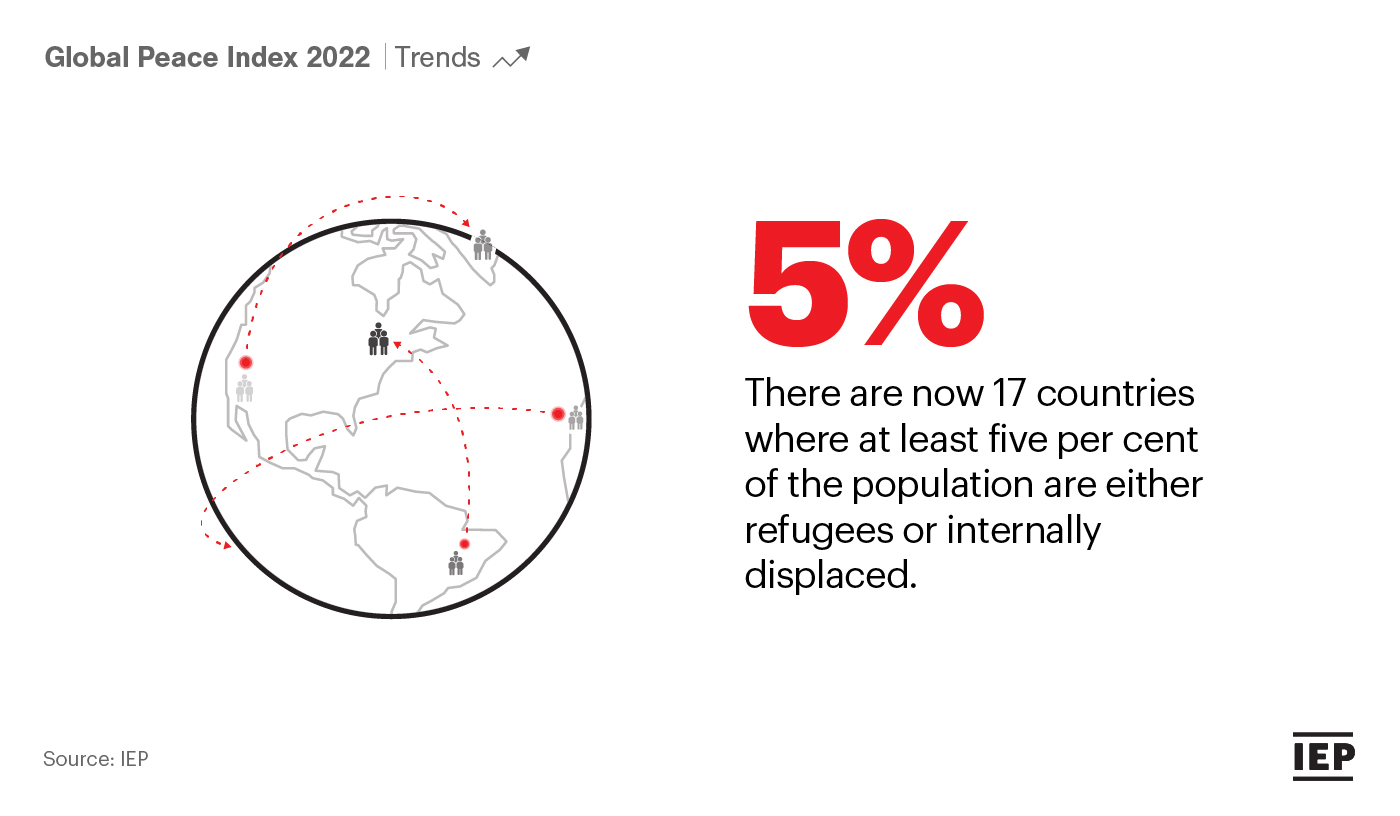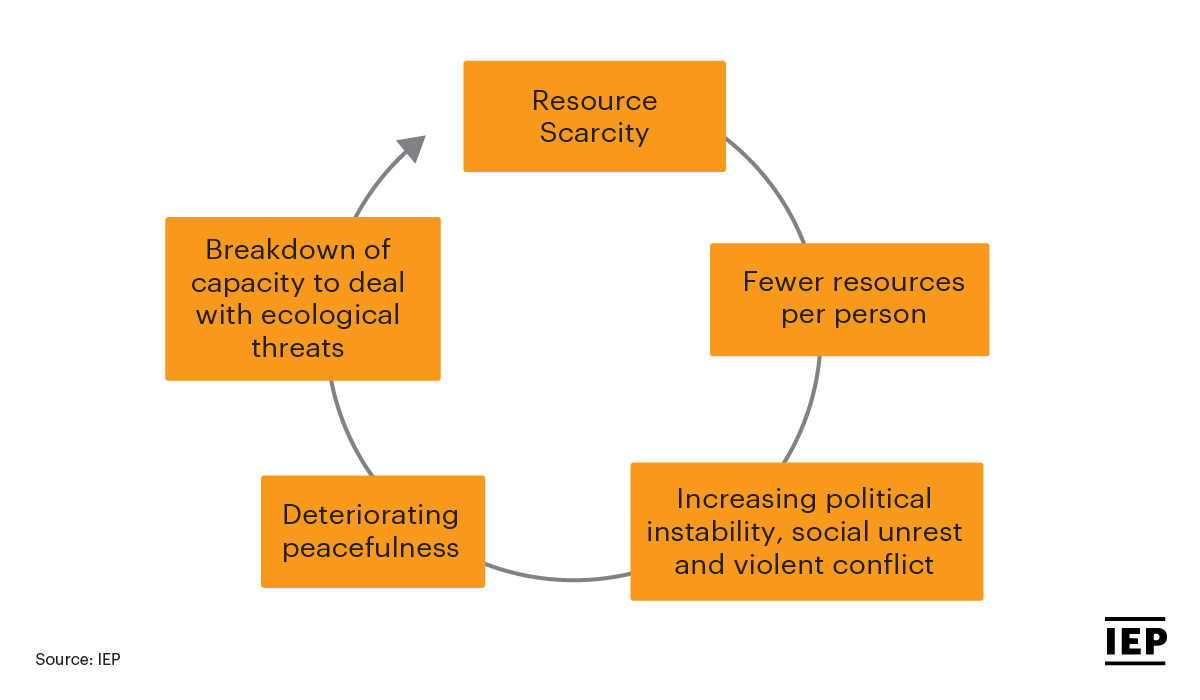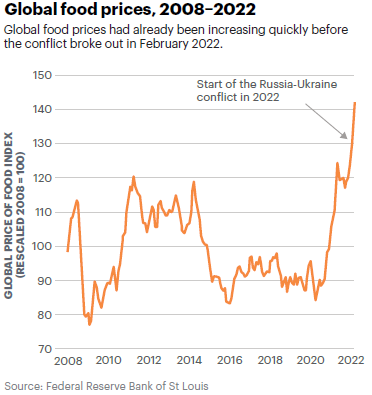The most recent Global Peace Index highlights a number of concerning trends. Peacefulness has declined again, and is at its lowest level in 15 years. The impact of ecological threats continues to rise, and food insecurity continues to grow across the globe.
Conflicts, environmental threats, political issues and the impacts of the COVID-19 pandemic have all contributed to widespread displacement and the world is facing an unprecedented refugee crisis.
Currently there are 17 countries around the world where at least 5% of the population are either refugees or internally displaced. This is an alarming trend, and the number of displaced people around the world is currently at an all-time high having almost tripled from the levels reached in 2008. There are now over 88 million refugees and internally displaced people globally — and this number continues to rise.

This crisis has an enormous financial impact and in 2021 alone, the economic impact of armed conflict increased by 27% to $559.3 billion. This increase was largely driven by increases in the number of refugees and internally displaced people, with the financial impact more than three times higher than that of GDP losses from conflict.
The ongoing pandemic has also affected the behaviour of refugees, with far less returning home than was the case pre-COVID. 73% of refugees will move to a neighbouring country and as these threats often have broader regional implications, this in turn puts enormous stress on countries already under pressure.
Resource scarcity is a major threat and issues such as food insecurity, water scarcity and population growth are also likely to be exacerbated by high numbers of refugees. The Russian invasion of Ukraine has contributed significantly to this growing trend and is likely to have a substantial impact in the medium to longer term.

Conflict is a major trigger of displacement and the devastation of the Syrian civil war is indicative of that. Over 77% of the Syrian population have been made refugees or been internally displaced by the end of the war.
Since the beginning of the Ukraine conflict we have seen up to 11% of the population displaced. Ukraine is now among the ten countries with the worst score for the indicator of refugees and internally displaced persons according to the latest Global Peace Index 2022 report produced by IEP. In total over two million Ukrainians have fled the country. As evidenced by the Syrian conflict, as the situation continues, this number is likely to rise.
This has occurred against a backdrop of rising commodity prices and enormous strains on global food security, with 2.4 billion people already experiencing food insecurity according to the latest Ecological Threat Report.

The high number of displaced people that the Ukraine conflict has triggered could further exacerbate food insecurity, particularly with Ukraine representing a critical source of grain for much of the world.
Food Insecurity was projected to rise a further 43% by 2050 before the Ukraine conflict began. We can expect the rise to be even greater as a result of the knock-on effects of the conflict. The impact of the war on food prices has already been significant and this is unlikely to change any time soon.
Ukrainian cities and infrastructure have seen significant damage as a result of Russian military operations and this suggests that even if the conflict were to end soon, for many displaced people, an immediate return is unlikely to be an option.
Over 1% of the world’s population are currently displaced and that figure is projected to grow.
The war in Ukraine represents the latest in a series of destructive events that have triggered widespread displacement. The long-term impacts of this trend are among the most significant threats to global peace. A substantial and united effort by the international community is required if the trend is to be reversed.